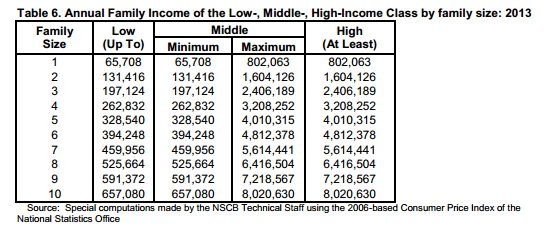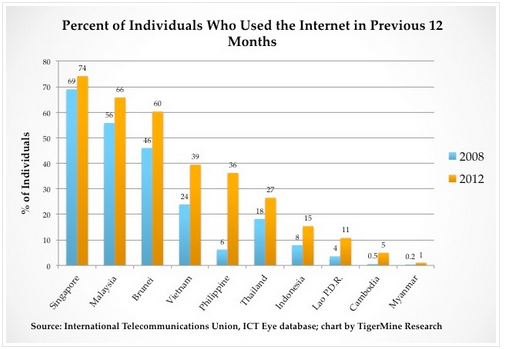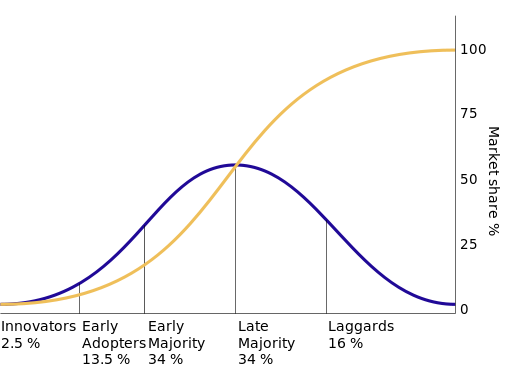I wonder how many businesses in the Philippines takes the time to do market research before jumping or investing in something. Of the many businessmen/women I met, I know most of them makes their business decisions on rough estimate on their understanding and point of view of the world. It truly helps if they are well informed – like if they read the newspaper everyday. But in case not, sometimes basing your market research on your personal point of view may cause you a potential costly decision.
Here’s some of the common misconception I encounter when trying to come up with a new idea or innovation, or just my general understanding of business.
1. If a business idea or innovation is meaningful to me, it must be meaningful to a lot of people and is a worthy investment.
I don’t think I’ve ever had a friend who ever claimed to be an upper-class Filipino citizen. It doesn’t even matter if they own more lots/houses or cars than the number of family members they have at home; or even if they drive a different sports car in a month. Everyone will just claim that they are middle class or lower class – period. I think it’s good not to brag or be arrogant, but if you are applying the same mentality in your business decisions – you might be in trouble.
Here’s some helpful tables on a study conducted by NSCB on social classes in the Philippines:
I am not aware of your actual status in life so you can just easily find your range in the graph. The Family size refers to the number of family members who rely on that Family income. So if you are still living with your parents or has a subsidized living, it should be totaled with the income of everyone at your home. I believe this is gross income too, meaning its computation BEFORE taxes are deducted. But I may be wrong on that.
Then, after finding the range where you are at, look also at the breakdown of our total population and see where you are at in terms of percentile:
 This information is a bit old though – with last analysis back in 2009. It’s been 5 years since then, I am hoping against hope that the numbers were significantly better. This graph says that 74.7% of our population are still in lower class. 25.2% are in middle class and a whooping 0.1% is considered as high class. (The report had a detailed per region analysis as well).
This information is a bit old though – with last analysis back in 2009. It’s been 5 years since then, I am hoping against hope that the numbers were significantly better. This graph says that 74.7% of our population are still in lower class. 25.2% are in middle class and a whooping 0.1% is considered as high class. (The report had a detailed per region analysis as well).
I am not implying that we should not target products and services to the Upper-Middle or High class. I am simply stating that we need to make sure we apply a level of context to it. If you are developing a product targeted to that segment, at least you know the actual market size you are working with.
2. If it’s applicable in America, it must be applicable here in the Philippines
Most of the articles you will find online are still more predominantly driven by the US contents unless you specifically state it as such. Whenever I tried to find articles related to IT or digital contents, I always end up seeing a study made in the US. One example is this article: Top 10 Digital Marketing Trends in 2014. I explicitly indicated Philippines digital landscape and got this article. To be fair, it does talk about digital marketing trends. But it gives me an uneasy feeling as companies might be flocking towards starting these initiatives only to realize after much investment that it is not accomplishing the reach it intends to get.
This article talks about digital trends such as location based marketing, more visual contents on websites, more mobile marketing etc. But the more important factor to that is that, the studies were all based on understanding the US digital landscape or more advanced countries rather than the Philippines. This research might be best coupled with this article from TigerMine Research about The Philippines Digital Boom: 5 Key Trends for 2014. Some key points this article made:
a. “Internet Access is on the rise – but still has limited reach”
The chart below says that we’ve made significant progress in providing internet access in the country overtaking Indonesia and Thailand in the past couple of years. Now with 36% of the population that had access to internet, this might mean that even the non-poor lower class citizens have gained access to it already which is good news.
I don’t necessarily consider this a contradictory message to initiative such as location marketing. I just think you should first target on creating a website, offer potential e-commerce, then focus on location marketing. It can have its upside to go advance immediately. The graph also tells us that we have brand new internet users who might not go through the same learning curve as the others in the past, if your website now has location based marketing, then these new users will not know other ways of finding the information too – so that is to your advantage. It is a good time to introduce new ways of doing things.
b. “Mobile Penetration now exceeds 100% but Smartphone Penetration remains low”
The Filipinos apparently spends less time on their smartphone than any of our ASEAN counterparts. This information was surprising for me because I feel like with the younger generation Filipinos, most seem to just be glued on their devices. This can probably be best explained in the context of the classes above. Since most of the Filipinos are still on the lower class bracket, a 15% reach on smartphone means that this doesn’t even cover all of the Middle Class Filipinos.
The article sites that business initiatives towards the mobile market will continue to be slow for a while in the country. The topics on trends about Mobile Marketing will greatly influence buyer’s decision from the US study will likely not be applicable to the Philippines just yet. The good news is that sales of mobile devices and its usage is predicted to grow significantly in the coming years. But if you are allocating your budget and have other initiatives in mind – they might being you the best return at this time than going smartphone or mobile.
3. Most companies will have the same digital strategy
This lesson is probably more applicable to IT start ups like us than for general consumer brands. Here at Creating Info we often talk about who our target market are and what are their current behaviors. It’s very easy as IT people to try to chase the latest and greatest trends in terms of technology. But, if nobody is prepared to use it or there was no business big enough to accommodate it, then it’s also probably a waste of time and effort to. We also have to profile businesses based on their size like micro, small, medium and large enterprises like this example definition from DTI and the number of establishments and its official percentage breakdown in 2011.
Then we can correlate this numbers based on their potential categories as Innovation Adopters. Scientifically, adapters are following a bell curve as follows according to theory of Diffusion of Innovations:
From this method, we can identify our market size for IT initiatives and also identify opportunities of potential needs per category. Today initiatives such as cloud might be interesting, but until we break down its services to something more accessible to the current business needs, we will continue to find low adoptions to it.
The important part here is to know what you are getting into, before you jump into it. There are no hard and fast rules in doing business. Just because the landscape isn’t fully ready yet, it doesn’t mean you shouldn’t start working on it. But it all depends on what your strategy is. 🙂





